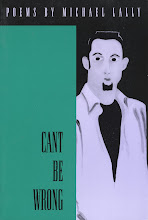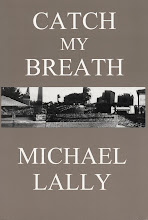 GIRLS LIKE US is the story of the culmination of that time of what became known as feminism’s “second wave.” But it’s not about the politics or theories, it’s about the application of newly developing ideas in the practice of musical entertainment.
GIRLS LIKE US is the story of the culmination of that time of what became known as feminism’s “second wave.” But it’s not about the politics or theories, it’s about the application of newly developing ideas in the practice of musical entertainment.Sheila Weller subtitles her book: “CAROLE KING, JONI MITCHELL, CARLY SIMON—and the JOURNEY of a GENERATION”—and that’s the story she tries to tell.
Having been there, even as a male, I can attest to her skill at stringing personal and public details together to create the atmosphere and feeling of those times, as well as the excitement, experimentation, discoveries and disappointments.
She gets a few things wrong, from my knowledge and experience, but not enough to get in the way or alter her basic theme: that these three women represented and helped move forward the cause of a generation of women.
The book begins with Carole King, rightfully, since she was a successful songwriter while still in her teens, before the other two even realized what they wanted to do (and a nod of acknowledgment to Suzanne Greco who first recommended I read it).
King was a New York Jewish kid who fell in love with early R & B and while still a teenager created songs with her partner, and eventual husband and ex-husband, Gerry Goffin that became giant hits for black singers. Like The Shirelles (“Will You Still Love Me Tomorrow”—the first #1 hit by a black female singing group) and The Drifters (“Up On the Roof”) among many more.
She was on the cusp of a generation in which women still married early, had children and stayed at home to raise them. She followed that path (again, as a teenager), but in between cooking and doing the laundry and shopping, she managed to write melodies, for her husband to put lyrics to, which became the emblematic songs of her times.
Because of her ethnic looks—her seemingly uncontrollably curly hair, her strong nose—she was self-conscious about her appearance, and her husband’s philandering didn’t help. But her confidence at the piano composing music and playing it and arranging it and recording it, was always rock solid—a contradiction that eventually was resolved, but not before some heartache.
The author points out the “fact” that King was not the “pretty” girl and that Joni Mitchell was, in the circles Mitchell traveled in growing up in Canada and setting out for the USA and music stardom. But I always found Carole King incredibly attractive and Joni Mitchell not very. Maybe it’s just me, or maybe it’s the kind of mass cultural branding that left most people back then believing the conventional wisdom that straight blonde hair and an upturned nose equaled beauty.
Mitchell’s achievements as she earned her way to the top of the music business with original lyrics and melodies, as well as guitar technique, made her an icon of women moving into the male dominated singer/songwriter scene.
Her story includes the obvious tragedy of her now known, but secret for decades, abandonment of the child she gave birth to as a young woman. But described as part of the larger story of women finding their way to a new kind of independence, artistically but also in terms of the social order and relationships with males, the nuances as well as the profound depths of this transitional time and Mitchell’s place in it is really well told.
As is Carly Simon’s equally moving story, not because of the material obstacles she had to overcome—she was a well-educated beauty from a wealthy and well established family (her father is the Simon in Simon & Schuster of book publishing fame)—but because of the way those privileges were seen in the culture of the late 1960s and early ‘70s and the ways she chose to incorporate them into her art.
I couldn’t help being persuaded by Weller’s mostly excellent research and the ways in which she ties the personal and creative stories of these three women with what was happening in society and the world at large during the years their talents were blossoming. So that after reading this book I now see these three women differently (though I always got King’s contribution to the music of my time, and appreciated Mitchell’s musicianship and Simon’s image if not her substance), as icons not of pop music success for women, but of emblems of what women were going through, thinking about, trying to achieve or figure out or work through to new discoveries of what it might mean to be a woman in their times in ways that have proven deeply instrumental in changing the very heart of our culture.
 A FREEWHEELIN’ TIME is the story of Suze Rotolo, the girl on THE FREEWHEELIN’ BOB DYLAN album, clutching his arm as they walk down the middle of a Geenwich Village street on an obviously blustery winter’s day in 1962.
A FREEWHEELIN’ TIME is the story of Suze Rotolo, the girl on THE FREEWHEELIN’ BOB DYLAN album, clutching his arm as they walk down the middle of a Geenwich Village street on an obviously blustery winter’s day in 1962.Subtitled “A Memoir of Greenwich Village in the Sixties” it concentrates mostly on the part of her story that coincides with her close connection to Dylan, but it’s so much more than that. It’s really a well-told story of a young woman’s self discovery on the cutting edge of times that were dramatically changing.
Rotolo was only a teenager when she met Dylan, barely out of his teens himself. But she was the more sophisticated when it came to New York City, leftist politics, the art and performance scene in the Village and downtown environs, and life in general.
Though he was passing himself off at the time as a teenage hobo who’d been born in the Southwest and worked as a carnie and rode freight trains and embodied the ideals of the restless American spirit, he was actually a middle-class college dropout from a respectable Jewish American family that was supporting him while he tried to make it in the music business in New York City at the beginning of a new decade.
She was uncomfortable when she found out how much of his life story, that he had told to friends and reporters and music business executives, was untrue, and even more uncomfortable with the changes she saw in him and the people who he surrounded himself with as fame came fast and furious.
She’s less critical than the above makes it sound though, because she’s sympathetic to what Dylan was trying to achieve and the odds he was facing, as well as honest about how well he achieved it and the price genius sometimes has to pay, or more accurately, those around the “genius” have to pay.
But it’s her story, and it’s a very engaging one, told economically and honestly and with accuracy (this is a time and a scene I saw first hand as a teenage “jazz musician” and budding poet running the same streets and parties and bars and etc. at the same time, just from a different perspective (my friends then were almost exclusively black and not into the folk scene, nor was I at the time)).
She gets a few things wrong, but nothing serious, and I love her voice as it comes through on the page, and her perspective, which is humble yet solidly direct, clear, consistent and strong. She struggled as a teenage female known as the star’s girl rather than as the artist she was becoming or for her independence in the face of age-old attitudes and obstacles.
If the three music creators in GIRLS LIKE US expressed through their music what they and other women were doing to break down social and sexual and artistic and political barriers, Rotolo was doing the same several years earlier and on her own, discovering ways to follow her own heart and desires.
It’s a great story and reminded me a little of poet Diane di Prima’s terrific memoir RECOLLECTIONS OF MY LIFE AS A WOMAN, which also emphasized her early years as a Village bohemian a few years before Rotolo arrived on the scene. Both were independent minded Italian-American girls from the boroughs who made the Village their home and owned it in ways a lot of others never did.
Di Prima was associated with the Beats, as Dylan and in her way Rotolo was, since the “hippie” thing had yet to happen when the main events of Dylan’s transformation into generational star and symbol were occurring. But the original Beats met and developed their theories and ways of making art, mostly writing, in the 1940s, and that’s where YOU’LL BE OKAY comes in.
 Subtitled “MY LIFE WITH JACK KEROUAC” it’s the story of another “genius’s girl”—Kerouac’s first wife. Always referred to by Kerouac and others writing about his life as Edie Parker, either she or the publishers chose to use the name Edie Kerouac-Parker as the author of this memoir.
Subtitled “MY LIFE WITH JACK KEROUAC” it’s the story of another “genius’s girl”—Kerouac’s first wife. Always referred to by Kerouac and others writing about his life as Edie Parker, either she or the publishers chose to use the name Edie Kerouac-Parker as the author of this memoir.It was written over a period of years but published posthumously, so it’s impossible to know how true it is to her original writing. But the editors—Timothy Moran and Bill Morgan—assure the reader that it’s Edie doing the writing, with a few minor exceptions, and it’s easy to believe, because the voice is distinct and uniquely individual.
Though it’s also a voice you may recognize, as I did. Edie was obviously, like all the women in these books, independent in ways that were “ahead of her time” but not unknown. Most of us had aunts or great aunts or others we knew or heard about like Edie—a free spirited, independent, party loving, straight talking individualist, as they used to say.
Her story clears up a lot of the speculation about Kerouac as a husband, lover, and friend, and makes him out to be the man a lot of us have always found in his books, well intentioned, often kind and gentle and loving, dedicated to his writing and the life of a writer.
But it’s her story, and it’s a great window into what it was like to be an attractive and adventurous young woman in the midst of an artistic revolution that would eventually become the cultural one that would change the lives of the women in those other books in the years that followed.
Joyce Johnson’s MINOR CHARACTERS, the account of her time as Kerouac’s girlfriend just when he went from obscure and broke unknown to the bestselling James Dean of novelists stardom overnight, is more literary and a beautifully insightful and bright book worth reading. But so is YOU’LL BE OKAY in its more conversational talking-over-a-drink in a bar, or at the kitchen table way.
I recommend all three books for Christmas presents, especially for any friends who dig Dylan or Kerouac or King or Mitchell or Simon, or who just love intimate histories of our recent “American” past.
















1 comment:
ahhh
!!!
my Youth's "Goddesses"
also fun, fun, fun:
WOMEN of the BEAT GENERATION..
and, the "ladies" sure could write!
so much was "going down" besides what the "boys" were doing bras burned, The Pill
The Japan and India Journals: 1060-1964 also a 'good' read
Post a Comment